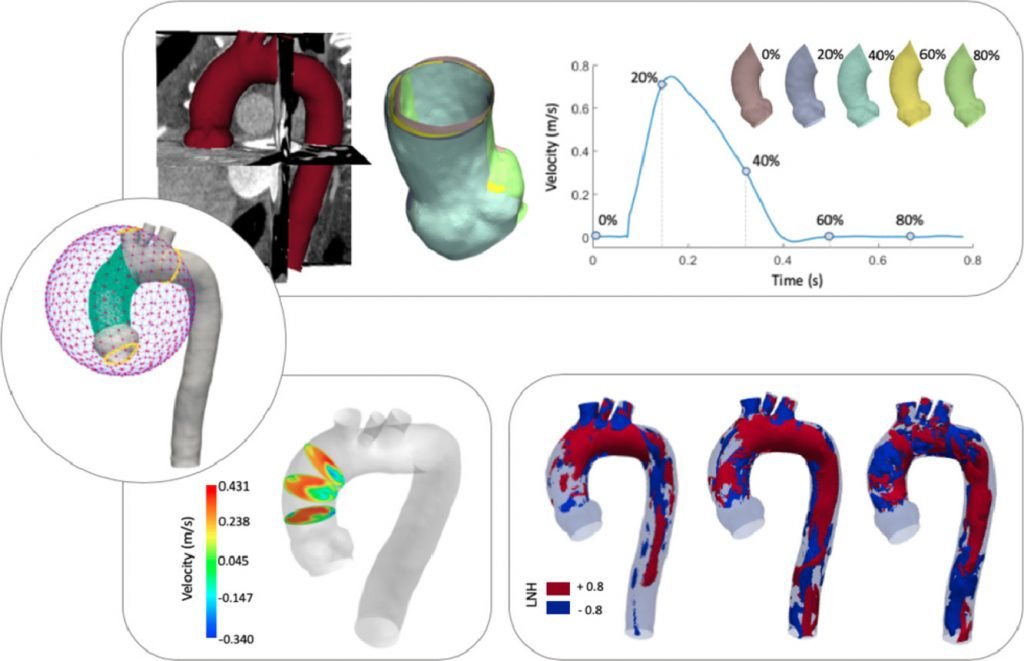An interesting article titled A novel formulation for the study of the ascending aortic fluid dynamics with in vivo data has been published on Medical Engineering & Physics Volume 91, May 2021.
https://doi.org/10.1016/j.medengphy.2020.09.005
Abstract
Numerical simulations to evaluate thoracic aortic hemodynamics include a computational fluid dynamic (CFD) approach or fluid-structure interaction (FSI) approach. While CFD neglects the arterial deformation along the cardiac cycle by applying a rigid wall simplification, on the other side the FSI simulation requires a lot of assumptions for the material properties definition and high computational costs. The aim of this study is to investigate the feasibility of a new strategy, based on Radial Basis Functions (RBF) mesh morphing technique and transient simulations, able to introduce the patient-specific changes in aortic geometry during the cardiac cycle. Starting from medical images, aorta models at different phases of cardiac cycle were reconstructed and a transient shape deformation was obtained by proper activating incremental RBF solutions during the simulation process. The results, in terms of main hemodynamic parameters, were compared with two performed CFD simulations for the aortic model at minimum and maximum volume. Our implemented strategy copes the actual arterial variation during cardiac cycle with high accuracy, capturing the impact of geometrical variations on fluid dynamics, overcoming the complexity of a standard FSI approach.
Learn how advanced mesh morphing of our RBF Morph combined with Ansys Fluids helps to combine in silico and in vivo data for ascending aortic simulation.




